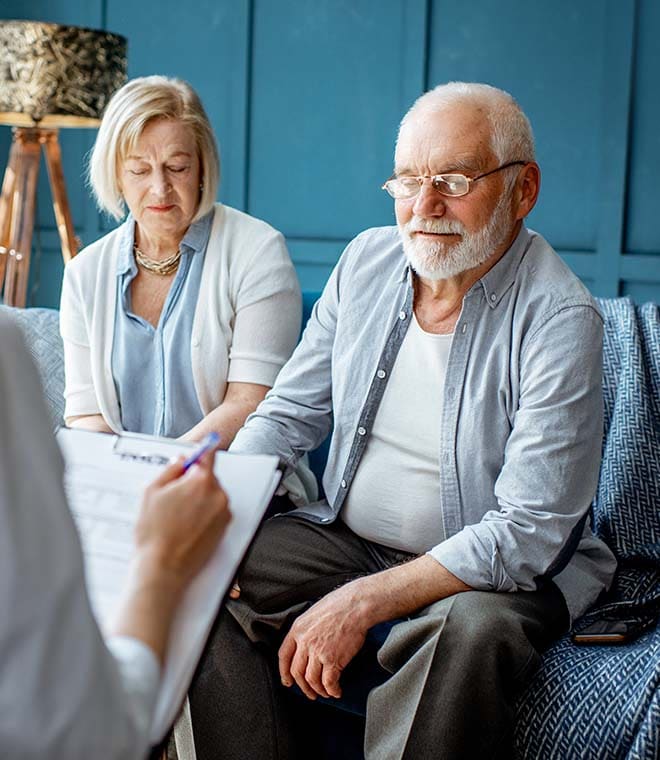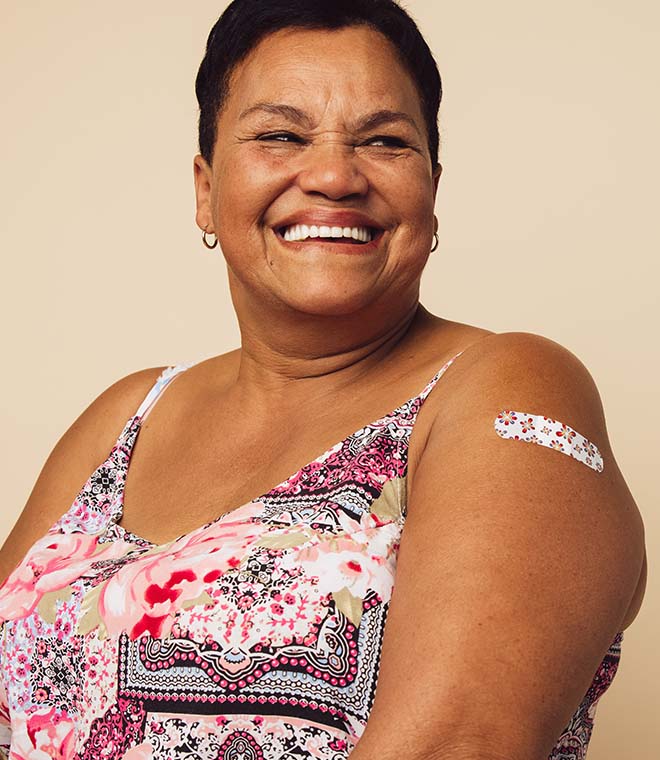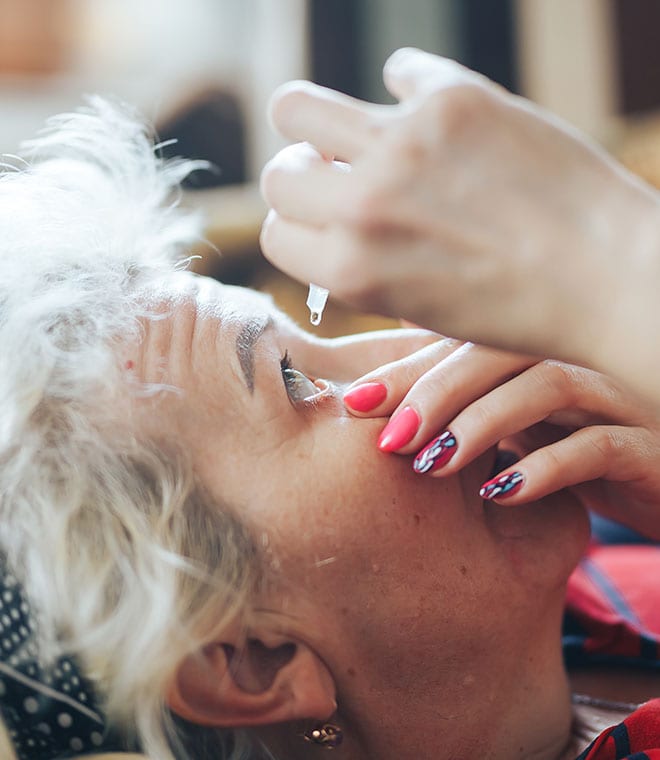Health
Osteoporosis: Get the facts about bone loss
By Jenilee Matz, MPH Jan 25, 2024 • 8 min.
More than 53 million people in the United States have osteoporosis or are at risk for the bone condition. The chance of osteoporosis goes up as you get older. Get the basics on this preventable and treatable condition.
What is osteoporosis?
Osteoporosis results from loss of bone mineral density, a marker of how strong bone is and how likely it is to break. In osteoporosis, the bones thin and become weak and brittle, which greatly raises the risk of bone breaks or fractures. As the condition progresses, the bones become so fragile that fractures can happen very easily. Even minor bumps, bending, lifting or coughing can cause a fracture when bones are weak. In fact, it's estimated that bone fractures due to osteoporosis happen once every three seconds worldwide. Fractures most often occur in the hip, spine and wrist.
What causes osteoporosis?
From childhood through young adulthood, our bones develop and strengthen. Bones reach peak bone mass in our early twenties. Then, depending on your lifestyle, your bone mass stays stable or declines very slowly for a period of time. Once you reach midlife, bone mass starts to decrease more rapidly. In women, bone loss accelerates during menopause due to declining estrogen levels. The hormone estrogen helps to build and maintain bone. Bone loss often happens the most quickly in the first five to seven years after menopause. In men, hormone levels also fall with age. This can contribute to bone loss in men after age 50.
Bone is constantly remodeling. As bone loss occurs, new bone forms. However, in osteoporosis, the rate of bone loss is greater than the rate of new bone growth. This gradually thins and weakens the bones. People often wonder about the difference between osteopenia vs. osteoporosis. Osteopenia is mild thinning of bone, while osteoporosis is more advanced thinning. Many things can affect the rate at which bone thins.
In addition to menopause and aging, other osteoporosis causes include certain health conditions, medications and treatments. Osteoporosis is more likely to occur in those with eating disorders, alcoholism, hyperthyroidism, kidney disease or certain gastrointestinal problems. Long-term and/or high-dose use of some medicines may increase the risk for osteoporosis. Examples include glucocorticoids, certain anticonvulsants and medicines used to treat or prevent gastric reflux. Chemotherapy and radiation treatment for cancer can also cause bone loss and eventually lead to osteoporosis.
Risk factors for osteoporosis
While everyone's bones weaken with age, certain factors put you more at risk for osteoporosis. These include:
- Female gender
- Body type with a small, thin frame
- Caucasian or Asian ethnicity
- Family history of osteoporosis
- Low bone density
- Hormone problems, such as amenorrhea (abnormal absence of menstrual periods)
- A diet low in vitamin D and calcium
- Extreme dieting or inadequate caloric intake
- Bedrest or lack of physical activity
- Excessive alcohol consumption
- Smoking
Osteoporosis symptoms and diagnosis
Unfortunately, there aren't any symptoms of osteoporosis. Often called a "silent" condition, people may not know they have it until they break a bone. If you experience collapsed vertebrae, osteoporosis signs and symptoms in this case may include severe back pain, height loss or very stooped body posture.
Your healthcare provider will likely keep an eye on your bone health, especially if you have risk factors for osteoporosis. To diagnose osteoporosis, your provider will review your medical history, do a physical exam and possibly do blood and urine tests. They may also recommend a bone mineral density test. This test can detect osteoporosis, estimate your chance of bone fractures and determine how well osteoporosis treatments are working if you already have the condition.
Osteoporosis treatments
Treatment for osteoporosis involves making lifestyle changes that help lessen bone loss:
- Take in enough calcium, vitamin D, protein and calories. An osteoporosis diet focuses on calcium and vitamin D intake. Women who haven't gone through menopause and men age 70 and younger should consume at least 1,000 mg of calcium per day. Women who have gone through menopause and men age 71 and older should aim for 1,200 mg of calcium each day. Adults younger than age 70 need 600 IU of vitamin D each day, while those age 70 and older and postmenopausal women need 800 IU of vitamin D per day. It's also essential to consume enough calories and protein.
- Exercise regularly. Physical activity improves bone mass and can help maintain bone density. Weight-bearing moves are ideal exercises for osteoporosis because they have a positive effect on bone mineral density. If your feet touch the ground, you're likely doing a weight-bearing exercise. Examples include resistance training with weights, walking and running.
- Quit smoking and avoid secondhand smoke. Cigarette smoke accelerates bone loss. If you smoke, get help to quit.
- Drink alcohol only in moderation. Consuming more than two drinks per day can increase the risk of fractures.
Your healthcare provider may also prescribe osteoporosis drugs. Medications for osteoporosis work by slowing or stopping bone loss, building new bone, increasing bone density or lowering fracture risk. Osteoporosis medications include the following:
- Bisphosphonates that slow the breakdown and removal of bones in postmenopausal women
- Selective estrogen receptor modulators (SERMs) that have estrogen-like effects on bones in postmenopausal women
- Estrogen and progestin therapy may be used in women who are looking to reduce symptoms of menopause and cannot take other medications to treat osteoporosis
- Denosumab, an antibody against a factor that breaks down bones; this boosts bone mineral density and reduces the risk of fractures in postmenopausal women
- Parathyroid hormone and parathyroid hormone-related protein to stimulate bone formation in postmenopausal women and men
If you have osteoporosis that's caused by another health issue, your healthcare provider will likely also treat the other condition.
Taking special care to avoid falls is an important part of managing osteoporosis. Make sure your home is well lit, remove clutter and throw rugs from the floor and be careful when walking on slick surfaces. You may need to use a cane or walker for added stability.
How to prevent osteoporosis
The good news is that there are ways to keep your bones healthy and strong. The same lifestyle changes that help treat osteoporosis also aid in osteoporosis prevention. Be sure to consume an adequate amount of calcium and vitamin D, do weight-bearing exercises, quit smoking and limit your alcohol intake. Your healthcare provider may also prescribe medications to help decrease your risk of osteoporosis.
Osteoporosis is a common condition that can often be prevented and treated with healthy habits and, sometimes, medication. If you have osteoporosis, be sure to follow your treatment plan as prescribed by your healthcare provider. Doing so can help lower your chance of fractures.
Clinically reviewed and updated January 2024.
Sources:
- https://medlineplus.gov/osteoporosis.html
- https://www.uptodate.com/contents/osteoporosis-prevention-and-treatment-beyond-the-basics
- https://www.nof.org/patients/what-is-osteoporosis/
- https://www.osteoporosis.foundation/news/fracture-every-3-seconds-worldwidethats-osteoporosis-20191018-0900
- https://www.bones.nih.gov/health-info/bone/osteoporosis/osteoporosis-hoh
- https://www.bones.nih.gov/health-info/bone/osteoporosis/overview#e
- https://www.nof.org/preventing-fractures/general-facts/what-women-need-to-know/
- https://www.nof.org/preventing-fractures/general-facts/bone-basics/are-you-at-risk/
- https://www.mayoclinic.org/diseases-conditions/osteoporosis/in-depth/osteoporosis-treatment/ART-20046869?p=1



